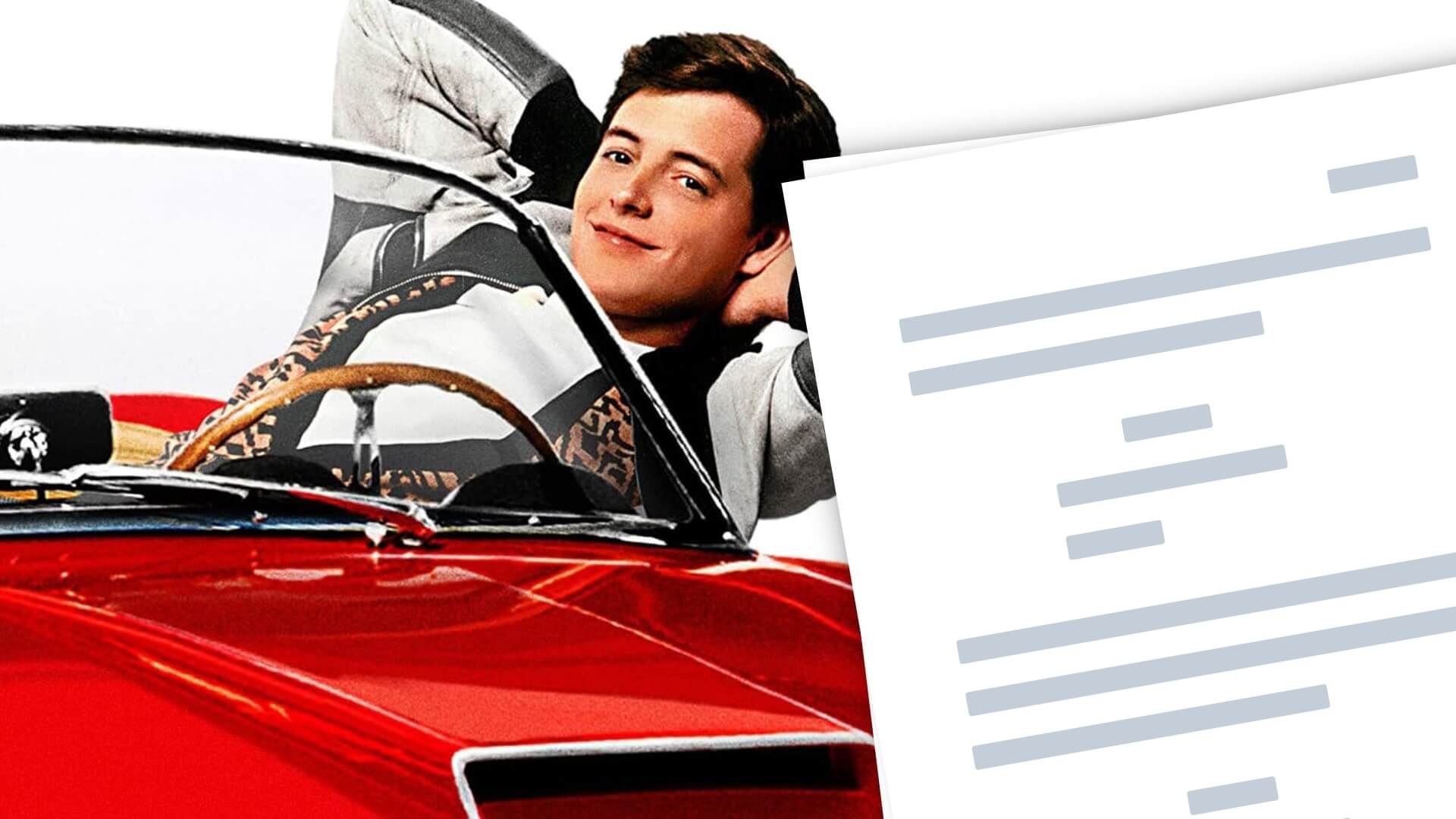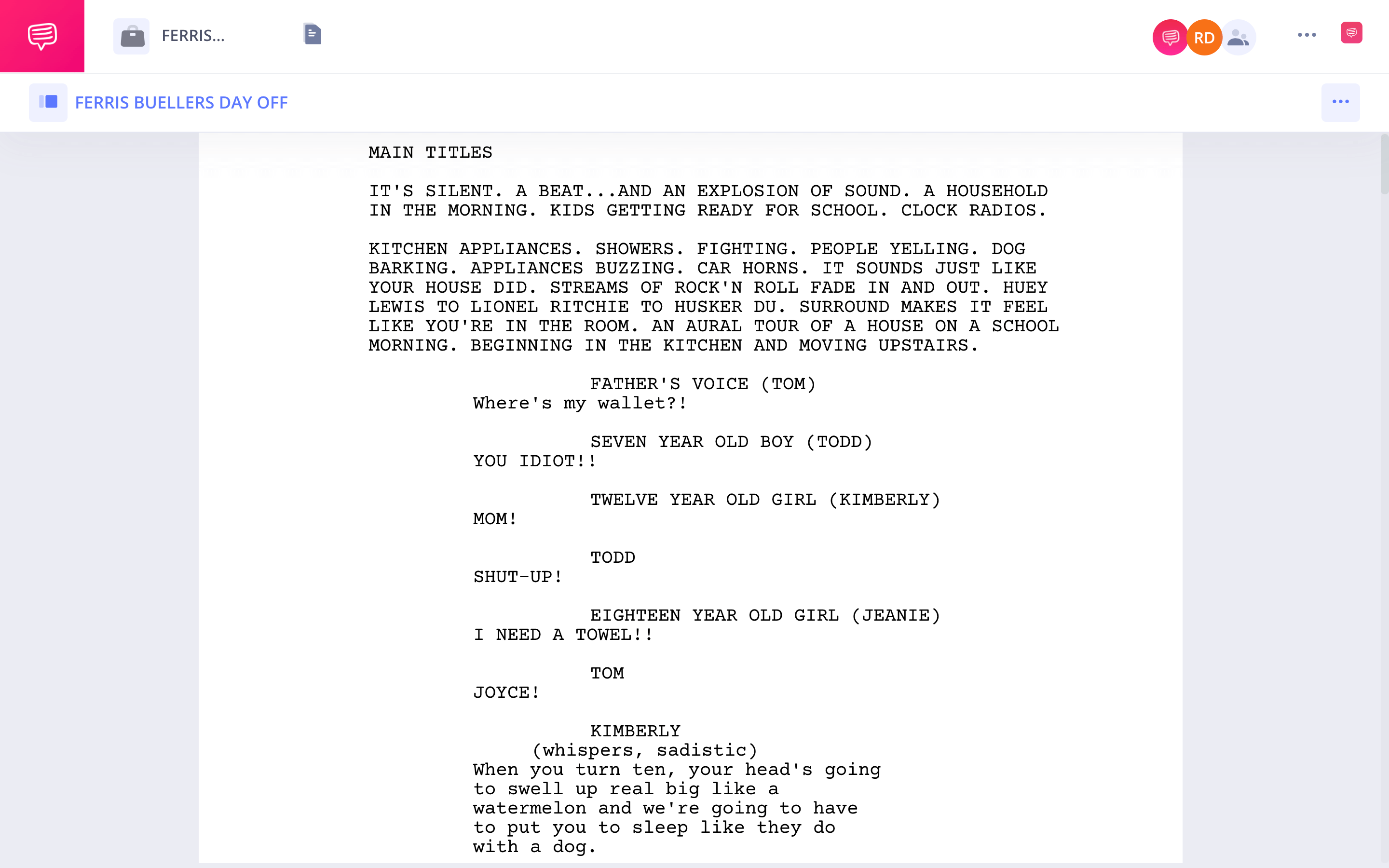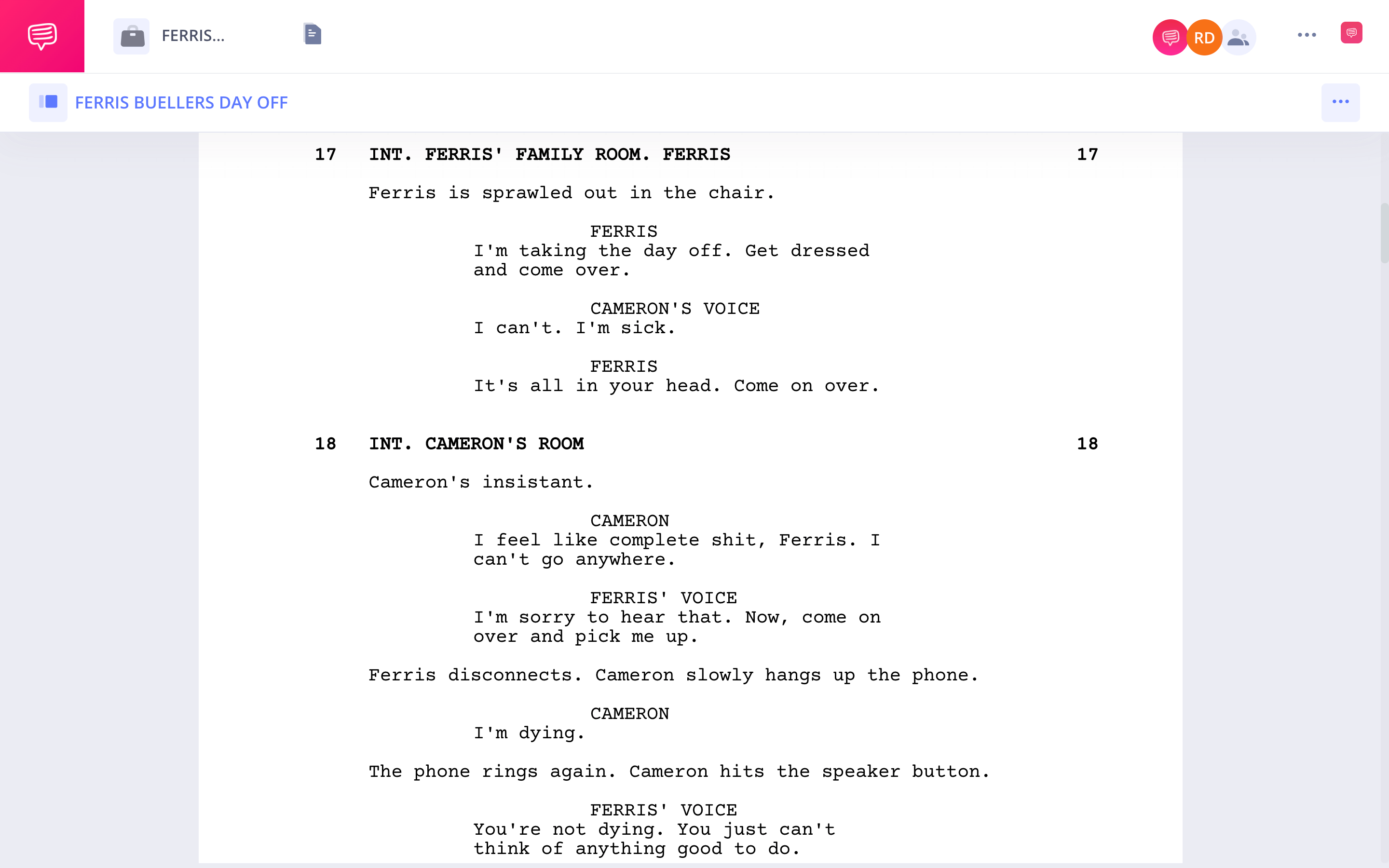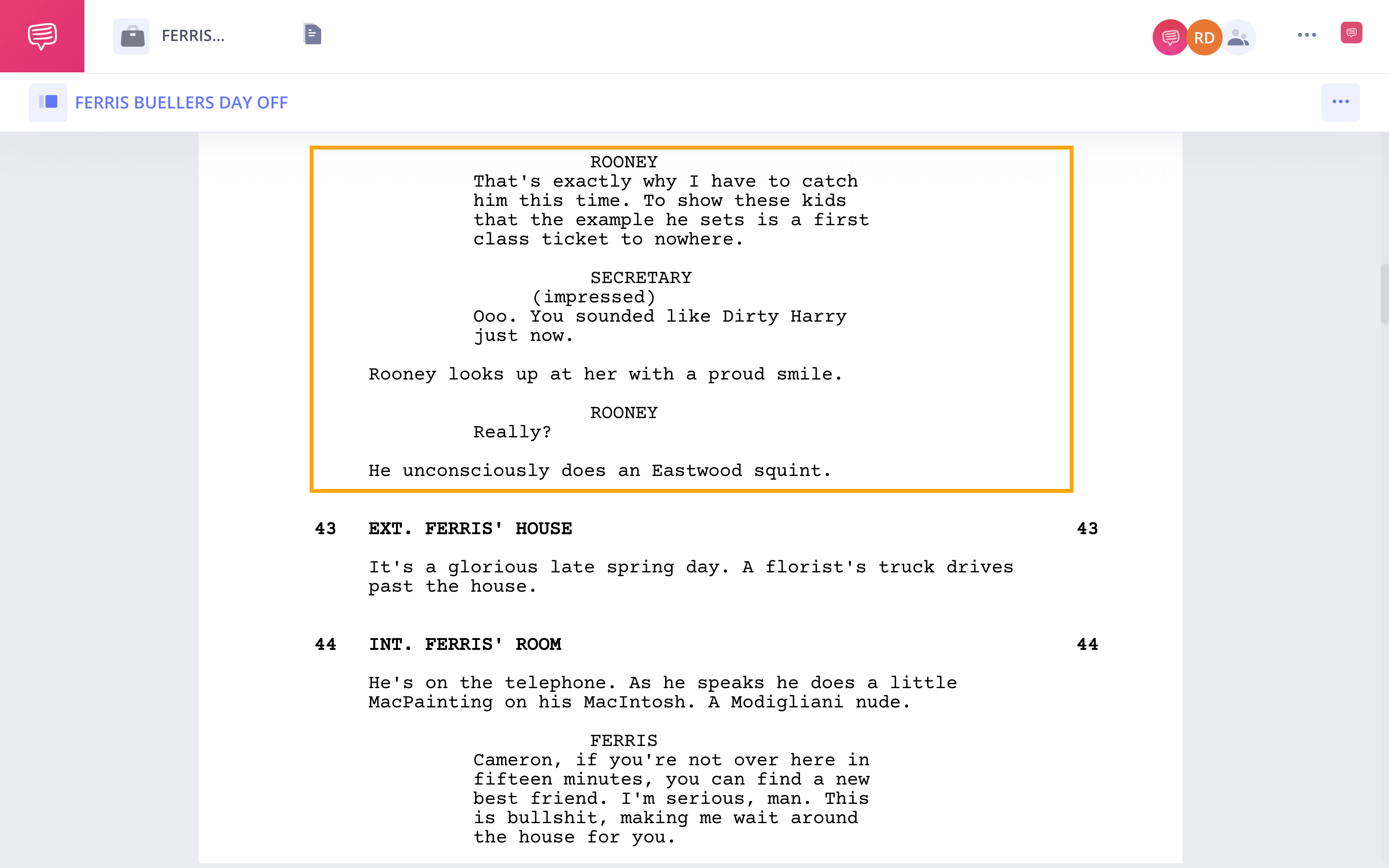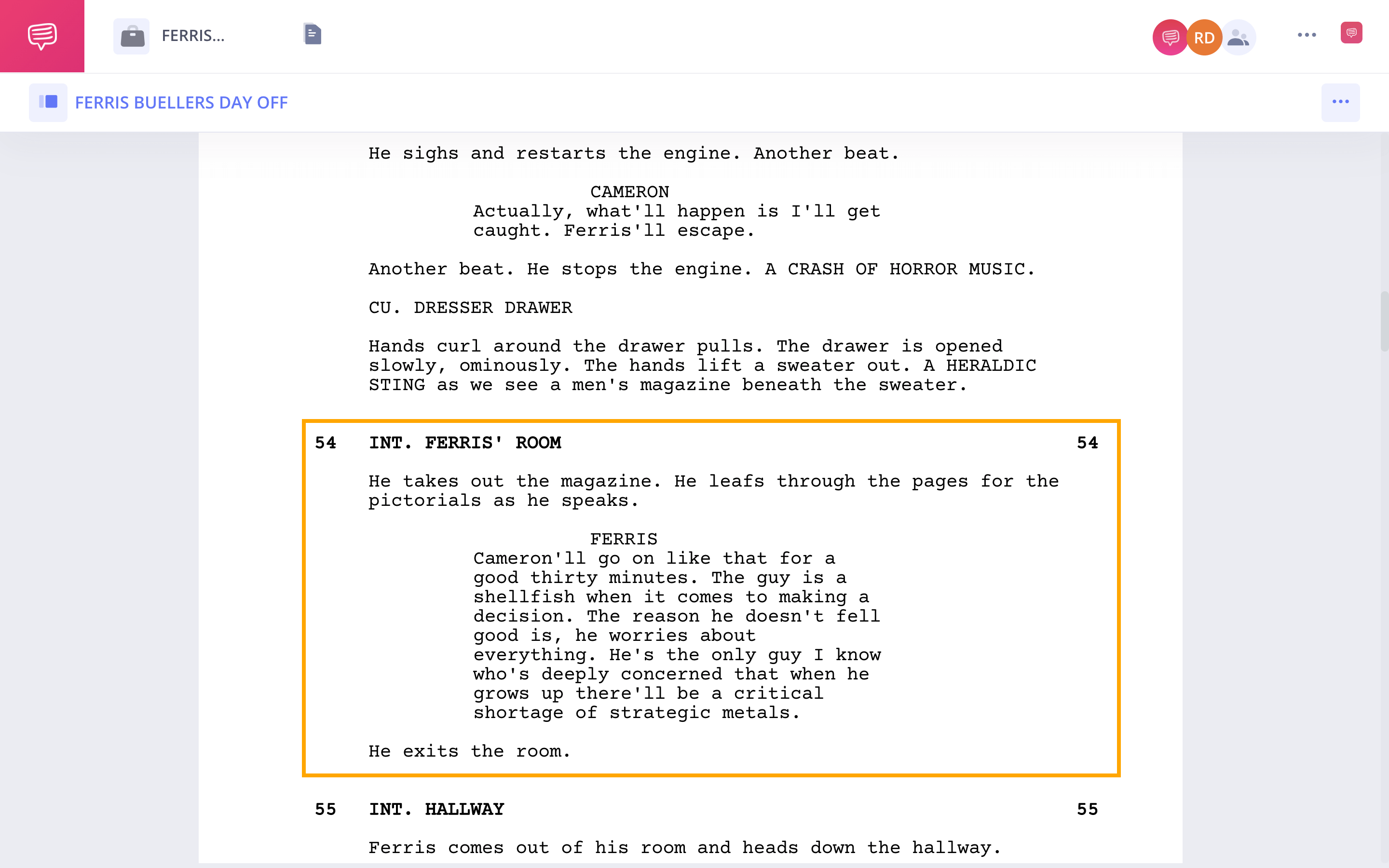When you think of cinema in the 1980s, a few cult films might come to mind like Pretty in Pink, The Breakfast Club, Ferris Bueller’s Day Off and Sixteen Candles to name a few. But did you know that the same screenwriter wrote all of these iconic ’80s films? His name is John Hughes and in this article we’ll be analyzing the Ferris Bueller’s Day Off script to learn some of the tricks of the trade from one of the most prolific screenwriters in cinema history.

WHO WROTE Ferris Bueller’s Day Off SCRIPT?
Written by John Hughes
John Hughes is an American filmmaker most known for writing some of the best films of the 1980s and 1990s like The Breakfast Club, Planes, Trains and Automobiles, Pretty in Pink, Sixteen Candles, Home Alone and Ferris Bueller’s Day Off.
Hughes is best known for his comedic, yet heartwarming coming-of-age films. Hughes was also known for his long term collaboration with iconic actors Molly Ringwald and John Candy.
Rumor has it that Hughes was such a prolific screenwriter that there are dozens of unproduced screenplays that he left behind after his untimely death in 2009.
STORY BREAKDOWN
STRUCTURE OF Ferris Bueller’s Day Off SCREENPLAY
Here is a quick Ferris Bueller’s Day Off summary:
Exposition
Ferris Bueller is a high school student getting close to graduating. He fakes being sick to have a day off from school.
Inciting Incident
Ferris calls up his best friend Cameron, who is actually sick, to play hooky with him. He finally agrees to join Ferris’ hijinx.
Plot Point One
Ferris convinces Cameron to help him get his girlfriend, Sloan, out of school so that the three can play hooky together. To do this, they borrow Cameron’s father’s prized Ferrari.
Rising Action
Principal Ed Rooney is suspicious that Ferris’ is not actually sick and decides to investigate. Meanwhile, Ferris, Sloan, and Cameron head out to have fun in Chicago.
Midpoint
The kids hand the car over to a valet service, who then take the Ferrari for a joyride. Principal Rooney realizes Ferris is playing hooky after visiting his empty house.
Plot Point Two
The kids spend their day conning their way into a fancy restaurant, a Cubs baseball game, and even a parade.
Build Up
The kids discover additional miles on the Ferrari. Cameron loses it after realizing his father will find out they took the car. Ferris has a bright idea of running the car in reverse to take the miles off.
Climax
After Ferris’ idea doesn’t work out, Cameron takes his frustrations about his dad out by kicking the car. The car ends up flying out the window. To everyone's surprise, Cameron remains composed and faces his fear of confronting his dad.
Finale
Ferris makes it back in time to the house before his parents, but is caught by Principal Rooney. Ferris’ sister Jeanie covers for Ferris and all ends well.
Ferris Bueller Screenplay Structure
The real hero in the Ferris Bueller script
Ferris Bueller’s Day Off follows the classic structure of the hero’s journey. However, there is a twist. The hero of the story isn’t Ferris at all, but his best friend Cameron. Don’t believe me?
Let’s take a look at how Cameron fits into the hero’s journey.
We meet Cameron in his ordinary world — a sulken reality of dread as he lays sick in bed. Cameron then receives a quite literal call to action when Ferris calls him to play hooky from school.
In fact, Ferris gives him two calls to action after Cameron’s hesitation.
We brought the Ferris Bueller’s Day Off script into the StudioBinder screenwriting software to analyze this call to action.
Cameron’s Call to Action • Ferris Bueller script
Although Cameron initially refuses Ferris' call to action (another part of the hero’s journey) he eventually accepts it. Cameron officially crosses the threshold into the new world once he gives in to taking his father’s prized Ferrari out for their day of hooky.
Ferris, throughout much of the film, takes the role of Cameron’s mentor, constantly challenging him to live more freely. Cameron’s test as the hero throughout the story is his own battle of fear.
When the ordeal of the extra miles on the Ferrari happens, Cameron falls into a state of shock. But in this climactic scene, Cameron finally overcomes his fear, or as he puts it “Takes a stand.”
Ferris Bueller quotes • Cameron takes a stand
While we may not necessarily see the road back to the ordinary world for Cameron, we do get a glimpse of his transformation as he appears composed, confident, and actually excited to confront his father. While he may not necessarily be the main character of the film, Cameron embarks on the hero’s journey in the Ferris Bueller’s Day Off screenplay.
Ferris Bueller’s Day Off Characters
Subplots in the Ferris Bueller screenplay
Much of the comedic relief and suspense throughout Ferris Bueller’s Day Off comes from the screenplay’s use of subplots. While the A story follows Ferris and his friends playing hooky, subplots are used to follow the characters Principal Rooney and Ferris’ sister Jeanie as they both embark on a quest to catch Ferris.
Screenwriter John Hughes brilliantly kicks off both the B story of Principal Rooney and the C story of Jeanie at the same time. Let’s take a look at how the script intercuts both subplots and their inciting incidents.
Intercutting subplots in Ferris Bueller script
Subplots can be an incredible screenwriting tool for creating both comedic relief and conflict in a story. In the excerpt above, we see Hughes’ masterful screenwriting at work. His decision to intercut both subplot as well as the main plot together make for a story that is constantly moving forward.
This is what engages an audience.
Hughes continues to develop these subplots through intercut scenes. The build up of each plot line finally leads toward them all coming together for a great ending to the film.
Ferris Bueller ending
The Ferris Bueller’s Day Off script teaches us the importance of subplots and how they can carry separate plot lines that move the same story forward. Not to mention they are a perfect opportunity to expand and build on the tone of your film whether it is a drama or comedy.
Ferris Bueller quotes and monologues
Breaking the fourth wall
One of the more notable characteristics that the Ferris Buller’s Day Off script is remembered for is its use of breaking the fourth wall. Matthew Broderick’s monologue delivery while breaking the fourth wall is great, but Hughes’ use of the technique is what makes it so effective.
Let’s take a look at this scene in which we watch Cameron debate whether or not he should take Ferris’ call to action and play hooky. We cut to Ferris explaining Cameron’s behavior and characteristics.
Ferris Bueller’s Day Off Script
Hughe’s breaks the fourth wall here to efficiently provide information about Cameron’s character to the audience. While this is similar to the function of voice over, the decision to break the fourth wall allows the audience to better connect with Ferris.
It’s also important to note that throughout the Ferris Bueller’s Day Off screenplay Hughes does not overuse the fourth wall break. He reserves it for moments where efficiently provided information is necessary. Check out this video by Now You See It to understand what makes a fourth wall break great.
How to Break the Fourth Wall • Ferris Bueller script device
Breaking the fourth wall is a great technique that can be difficult to execute well. While it can be an effective and efficient way to communicate exposition to an audience, it can also be abused and result in poor screenwriting.
Reading through the Ferris Bueller’s Day Off screenplay is a great way to learn how and when to use a fourth wall break to serve a story.
Reading the script will also give you a better idea of how to utilize subplots and story structure. Afterall, John Hughes was a prolific screenwriter. And if you want to be a better writer, it’s important to learn from the best.
Related Posts
UP NEXT
Read and download more scripts
The 1980s was filled with iconic movies and screenplays. If you want to continue reading screenplays, we have similar titles like The Breakfast Club, Back to the Future, and Die Hard in our screenplay database. Browse and download PDFs for all of our scripts as you read, write and practice your craft to become the next great screenwriter.
